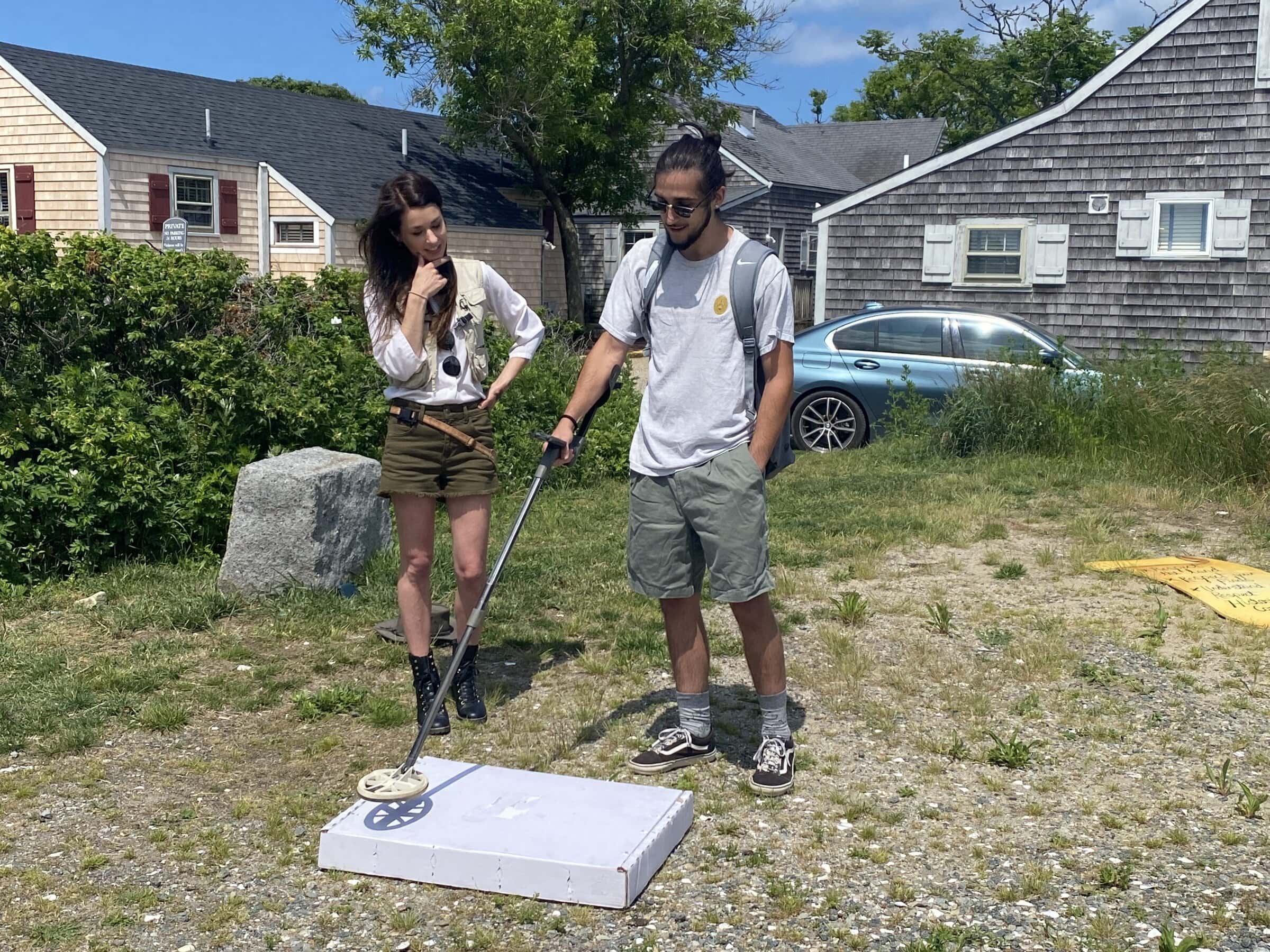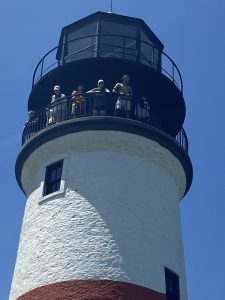History major gets firsthand look at historic preservation through Nantucket internship

William Olichney during a lesson in ethical metal detecting during his internship with the Preservation Institute Nantucket.
 The entire island of Nantucket, Massachusetts, is a National Historic Landmark District—making it a perfect place to dive deep into the issues surrounding historic preservation.
The entire island of Nantucket, Massachusetts, is a National Historic Landmark District—making it a perfect place to dive deep into the issues surrounding historic preservation.
This summer, William Olichney ’24 spent six weeks on the island as part of the Preservation Institute Nantucket (PIN), a program run by the University of Florida’s Historic Preservation program.
The internship is funded for a Randolph student each year by A.J. and Lynne Land ’60, who also provide a stipend for living expenses.
This year, the Lands’ established The A.J. and Lynne Coppage Land ’60 Fund for Experiential Learning to ensure Randolph students can participate in the PIN program in perpetuity.
PIN, which is celebrating its 50th anniversary this year, is designed to introduce students to the methodologies of cultural heritage conservation and preservation through research, documentation, and community engagement.
Nantucket is emblematic of the challenges that threaten many historic communities, including sea level rise and regular flooding, balancing tourism with heritage, the loss of historic materials, and unexplored cultural narratives.
“It seemed right up my alley, where I’ve done some historical research before, but I was excited to get involved with a program that is more guided,” said Olichney, a history major with an Asian studies minor.
PIN students learn from faculty, architects, preservationists, conservators, and advocates in the classroom and in the field as they earn six graduate level credits for their work.
The program is project-oriented, focusing on the research, documentation, and planning necessary to prepare for the challenges facing historic coastal communities.
Olichney was able to tailor the internship to his own interests, pursuing a project that looks at Nantucket’s porcelain collection.
“I learned Nantucket had a very interesting China trade,” he said. “I’m trying to tie some of the porcelain to a historical home here. It was built by a freed slave who started a free African American community in Nantucket. You can tell from his porcelain that his family was a middle class, pretty wealthy family that could have tea ceremonies and social gatherings.”
The house was recently restored for events, and the architect who worked on the project spoke to students this summer.
“This one especially is pretty unique because the stars sort of aligned with the restoration of this house,” said Olichney, who hopes his research will shine a light on both tangible—the porcelain itself—and intangible culture.
“Part of historical preservation is preserving intangible history,” he said. “A tea ceremony would be an example of that. It would be very interesting to make replicas of the porcelain found in the archaeology of the house and hold tea ceremonies there, to help tie in the history of the house itself and the history of porcelain on Nantucket.”
Olichney has also learned how to use GIS software to map out climate change, a threat to Nantucket and any historic preservation project, and has completed architectural studies of structures on the island.
He hopes to eventually pursue a career in museum curation.
“Historic preservation is multidisciplinary,” he said, “and I can certainly use a lot of the knowledge I’ve gained this summer.”
Tags: asian studies, Chinese studies, history, summer 2022 internships, summer internships
